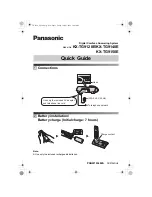
On a dry fog setting, which must always be employed indoors and in confined areas, the ignition
source must be continuous since the fog will not continue torching except briefly if the ignition source is
removed. On a wet fog setting, it is possible for the fog to continue to torch after removal from the ignition
source. Never use a wet fog setting indoors and in confined spaces. Extreme caution must be exercised
when using a wet fog setting under any circumstances. A wet fog setting can leave a deposit of liquid on
combustible surfaces creating a fire hazard should torching take place.
A second source of fog ignition can be the machine itself. If the machine stops running for any
reason including the exhaustion of fuel, the operator must quickly release the FORMULATION ON-OFF
BUTTON to stop the fog discharge. If the engine stops, it is possible for some formulation to flow into the
still hot engine tube where it will vaporize. Part of this vapor may then be drawn by natural thermal
convection back through the annular cooling air space between the cooling duct and the engine tube, to
the red hot engine combustion chamber. If the proportion of vapor to air is just right when this occurs, the
vapor will ignite and flash back through the discharge end of the engine tube, igniting the small amount of
formulation which may continue to flow very briefly. Burning formulation can then drip briefly from the
discharge end of the cooling air duct. If this burning formulation comes into contact with an easily
combustible material or a surface which has accumulated a substantial deposit of liquid formulation, a fire
could result.
5. SAFETY EQUIPMENT.
Many of the formulations which can be dispensed with this machine are
highly toxic and require special safety equipment. The formulation label should specify all safety
precautions with respect to the formulation. Read and observe the procedures,
cautions
and
WARNINGS
on the formulation label. Proper ear protection should also be worn when operating this machine.
6. IMPROPER OPERATION.
There is no substitute for good maintenance practices. An engine
with excessive carbon deposits will run weakly and is likely to stop at any time. A weak running engine
will also emit an extremely wet fog at lower rates of formulation flow and this can result in surfaces rapidly
becoming coated with the formulation and thus help to feed a fire if ignition takes place as described
above. Refer to the MAINTENANCE section for cleaning instructions.
7. IMPROPER USE.
Never place the discharge end of the machine too close to a wall or other
obstruction. The engine is maintained at the proper operating temperature by cooling air aspirated
(pumped) by hot gases flowing out the discharge (exhaust) end of the engine. If this cooling air flow is
prevented, the machine will overheat and it can suffer permanent damage which could result in an
explosion or fire. Maintain at least 24 inches (61 CM) clearance between the engine discharge (exhaust)
and external objects.
8. MACHINE DAMAGE.
Never operate a machine after it has been damaged
.
A damaged
machine can be a fire hazard.
9. WIND.
Fogging during windy conditions is not usually practical because the formulation will drift
out of the intended area. However, under no circumstances should fogging INTO the wind be attempted.
Should the machine stop running for any reason, and a wind gust force vaporized formulation back
against the hot combustion chamber, it could ignite and flash back causing momentary flaming from the
discharge (exhaust) end of the machine.
10. CHILDREN.
Many fogging operations are performed in residential areas commonly at dusk.
This presents the operator with the problem of children who are attracted to the fog. Children have been
observed running into and riding bicycles through the fog. Once in the fog, they cannot see or be seen. In
some reported instances, a child has been injured by running into an object obscured by the fog. Also
there is a possibility of fire should the machine briefly flame or become ignited from an external source.
Still another possible hazard lies in the toxic effect of the formulation, the severity of which depends upon
the chemical used, fog density, and the length of time of direct exposure.
IT IS THE OPERATOR'S RESPONSIBILITY TO DISCOURAGE ANYONE FROM
PLAYING IN THE FOG.
6
Summary of Contents for 2610E
Page 1: ...INSTRUCTION MANUAL FOR OPERATION SERVICE AND MAINTENANCE ...
Page 32: ...32 ...
Page 34: ...1 2 3 4 5 6 111111 7 8 14 13 12 11 10 9 18 15 16 17 FIGURE 10 34 ...
Page 36: ...36 ...
Page 38: ...38 ...
Page 40: ...40 ...
Page 42: ...42 1 3 2 4 5 6 7 BATTERY SIDE VIEW OF MACHINE FIGURE 15 ...
Page 44: ...10 10 1 2 3 4 7 8 9 44 10 10 5 6 TANK SIDE VIEW OF MACHINE FIGURE 16 ...
Page 47: ...47 ...







































